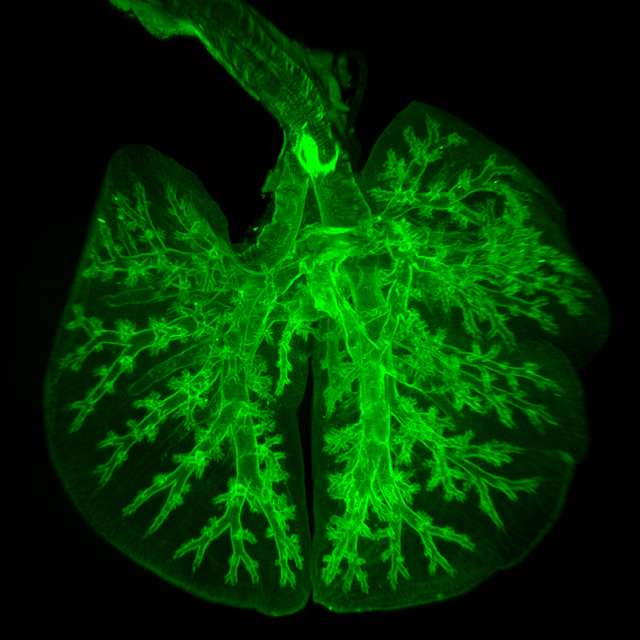Light sheet fluorescence microscopy (LSFM)
Light sheet fluorescence microscopy
Light sheet fluorescence microscopy (LSFM) is a fluorescence microscopy technique with an intermediate-to-high optical resolution, but good optical sectioning capabilities and high speed. In contrast to epifluorescence microscopy only a thin slice (usually a few hundred nanometers to a few micrometers) of the sample is illuminated perpendicularly to the direction of observation. For illumination, a laser light-sheet is used, i.e. a laser beam which is focused only in one direction (e.g. using a cylindrical lens). A second method uses a circular beam scanned in one direction to create the lightsheet. As only the actually observed section is illuminated, this method reduces the photodamage and stress induced on a living sample. Also the good optical sectioning capability reduces the background signal and thus creates images with higher contrast, comparable to confocal microscopy. Because light sheet fluorescence microscopy scans samples by using a plane of light instead of a point (as in confocal microscopy), it can acquire images at speeds 100 to 1,000 times faster than those offered by point-scanning methods.
This method is used in cell biology and for microscopy of intact, often chemically cleared, organs, embryos, and organisms.Starting in 1994, light sheet fluorescence microscopy was developed as orthogonal plane fluorescence optical sectioning microscopy or tomography (OPFOS) mainly for large samples and later as the selective/single plane illumination microscopy (SPIM) also with sub-cellular resolution. This introduced an illumination scheme into fluorescence microscopy, which has already been used successfully for dark field microscopy under the name ultramicroscopy.
Wikipedia contributors. "Light sheet fluorescence microscopy." Wikipedia, The Free Encyclopedia. Wikipedia, The Free Encyclopedia, Feb. 19, 2024.
Light Sheet Microscopy is a special fluorescence microscopic technique in which only a thin layer in the sample is illuminated, typically a few micrometers. Compared to conventional fluorescence microscopy, this results in better resolution and significantly reduced background signal. In addition, negative effects due to bleaching or light-induced stress on a living sample are reduced.
